Fiber Arts Take Over a Former Seaport Warehouse in NYC
See waterfalls of fabric, intricate threadwork, massive tapestries, and more!


Sumptuous mansions, extravagant parties, lavish outfits, and exotic cars – these are some of the scenes portrayed by F. Scott Fitzgerald in his book The Great Gatsby about the Gold Coast of Long Island during the Roaring ’20s. Inspired by visits to Long Island, Fitzgerald’s book takes place in an era when wealthy New Yorkers, seeking a more bucolic retreat from their urban lives, built opulent estates on the north shore of Long Island.
Of the grand Gold Coast mansions of that era that remain today, many have been demolished but many others have been re-purposed and renovated, functioning as venues for special events and weddings. Others have been converted into educational centers and museums. Here are ten of these grand mansions from Long Island’s Gold Coast Era:
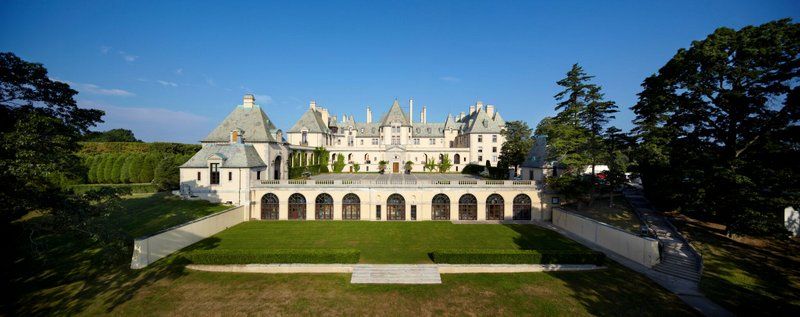
Oheka Castle, also called the Otto Kahn Estate, was built during the 1910s by philanthropist and investment financier Otto Hermann Kahn. Situated on the highest point on Long Island in Cold Spring Harbor, the estate is the second-largest private home in the United States boasting 127 rooms and over 109,000 square feet. The estate also features an 18-hole golf course, one of the largest private greenhouse complexes in America, and a sprawling French Formal Garden in the front of the house. During the heydays of the Gold Coast of Long Island during the 1920s, Kahn used the lavish estate to host extravagant parties and entertain royalty, heads of state, and Hollywood stars.
After Kahn’s death in 1934, the Gold Coast estate changed hands multiple times and was utilized for various purposes, including a retreat for New York City Sanitation workers. From 1948 to 1979, the Eastern Military Academy used the school. However, after the closing of the school in 1979, the building remained dormant for four years, during which over 100 documented arson attempts occurred and the mansion deteriorated to a state of complete dilapidation.
In 1984, Long Island developer Gary Melius purchased Oheka and commenced the largest private residential renovation project in the United States, even striving to recreate the gardens from the original drawings. However, after ten years Melius was unable to fund the exorbitant renovation process and he ultimately sold the estate to Hideki Yokoi. After ten years, and a lawsuit, Oheka Castle returned to Melius, who operates it as a weddings and events venue, luxury hotel, and conference center.
Oheka Castle exemplifies the estates of the Jazz Age, also known as the roaring ’20s, and is said to have served as a partial inspiration for Gatsby’s estate in F. Scott Fitzgerald’s The Great Gatsby. In addition, it has been featured in pop culture, including in the acclaimed movie Citizen Kane and Taylor Swift’s 2014 song Blank Space.
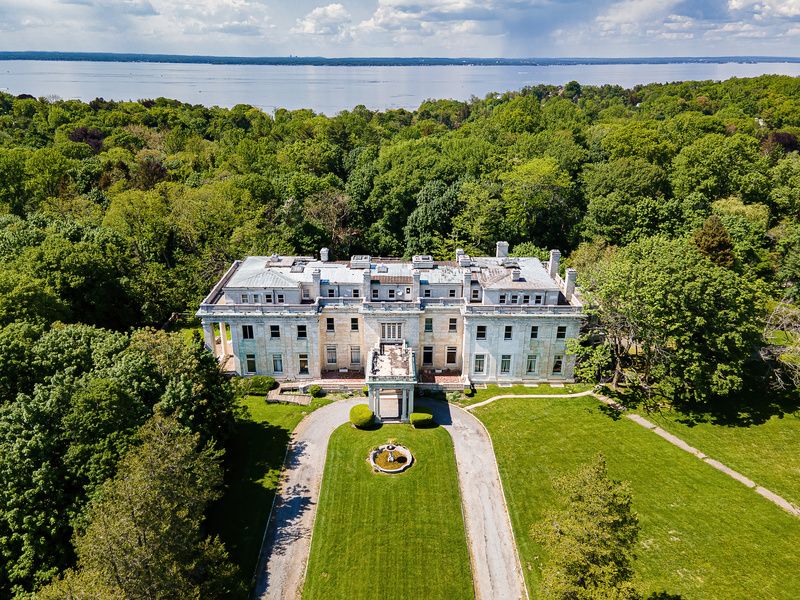
Photo courtesy of Max Spann Real Estate & Auction Company.
Located in Glen Cove, the historic Woolworth Estate, also known as Winfield Hall, was designed in 1916 by acclaimed architect C. P. H Gilbert for the prominent department store owner Frank Winfield Woolworth. Construction of the Italian Renaissance-style home was commenced immediately after Woolworth’s prior home–located at the same site–was destroyed in a mysterious fire. Fortunately, the plans for the new mansion were already drawn.
After Woolworth’s death, the estate loitered in the family until 1929 when it was purchased by the wife of Richard S. Reynolds, of the R. S Reynolds Metal Company. Afterward, the mansion became the Grace Downs Academy, a business school for young women, until it was purchased by Martin Carey, the brother of former New York Governor Hugh Carey. In late-January, 2015 a fire broke out at Winfield Hall that extensively damaged the mansion. After a restoration effort, the property was put up for auction in 2021 and just sold recently. You can see more photographs from our visit to the house last year here, as well as photographs of an abandoned clock tower building on the property.
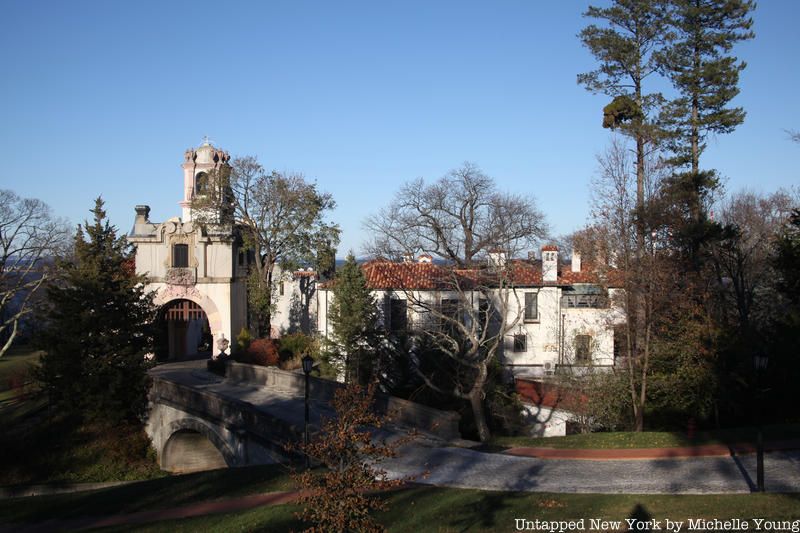
Currently a museum, planetarium, education facility, and wedding venue, Eagle’s Nest was the sumptuous Long Island mansion of William Kissam Vanderbilt II, the son of Alva Vanderbilt. William K. Vanderbilt was an automobile and yachting enthusiast. He founded and competed in the Vanderbilt Cup, located on Long Island. In order to improve crowd control and accessibility to the races, Vanderbilt formed a company that would build the Long Island Motor Parkway (also known as the Vanderbilt Parkway) – which also induced economic development on Long Island. Afterward, William K. Vanderbilt began construction on “Eagle’s Nest” at Centerport, Long Island in 1910.
Raised in the Gilded Age mansions of his family, it is not surprising that he wanted his own estate to show off. The Gold Coast mansion started off as a modest, two-story building, but was transformed into an opulent mansion complex in a Spanish Revival style rare in the region. The first expansion commenced after he received his inheritance of $21 million after his father’s death in 1921. The second expansion came after the death of his son in 1933 in an automobile accident.
William Kissam Vanderbilt bequeathed the estate to be donated to the county and used as a museum to house his marine, natural history, and ethnographic collection. In 1970 a planetarium was also constructed on the grounds.
Today, the Vanderbilt Museum serves as a mansion, museum, and planetarium. The venue can be rented for wedding and birthday events, while numerous school tours visit the planetarium and other exhibits. The mansion itself can be toured, allowing visitors to gain an intimate look inside an estate from Long Island’s Golden Coast.
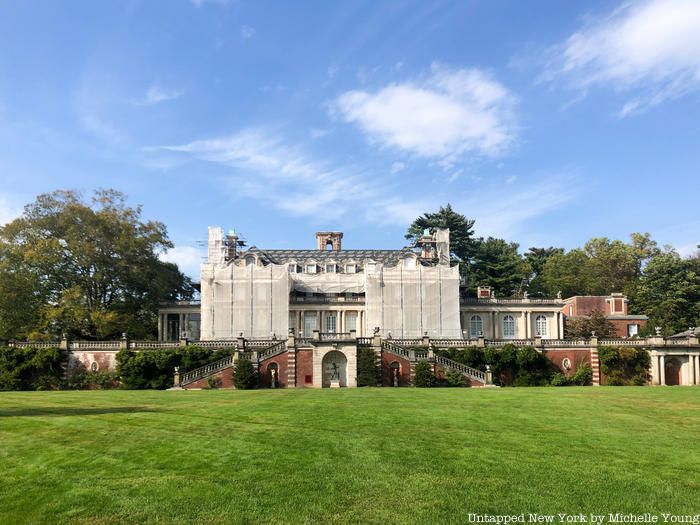
Nestled among 200 acres of a formal garden, woodlands, lakes, and ponds, Old Westbury Gardens was the estate of Hohn Shaffer Phipps. Construction on the estate began in 1903 when Phipps promised his British fiancée he would build her a home in the United States similar to her family estate in Battle Abbey. After Phipps’ death in 1958, the estate became a non-profit organization and the well-preserved gardens and estate were open to the public. It is also used for wedding photography and ceremonies.
Today, Old Westbury Gardens is possibly the most well-preserved of the Gold Coast estates and hosts historical tours, educational programs and lectures about nature, and even outdoor concerts and festivals. Moreover, Old Westbury Gardens has been the sight of numerous movie filmings, including scenes in North by Northwest and Cruel Intentions.
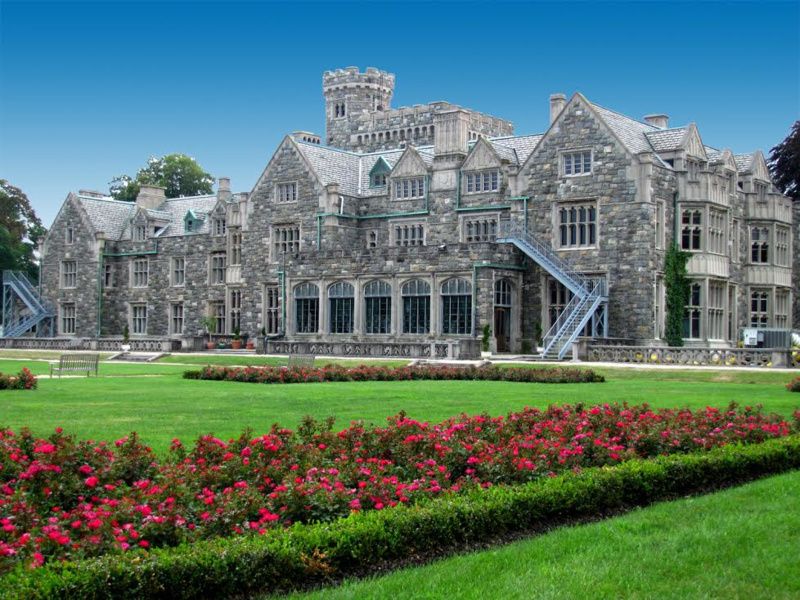
Hempstead House is one of the four mansions that constitutes the Guggenheim Estate, located in Sands Point. Construction of the mansion was started by Howard Gould, son of the railroad tycoon Jay Gould in 1912. Gould built two castle-like buildings, the main house called Hempstead House, and the smaller house known as Castle Gould. The other two mansions are called Mille Fleur and Falaise. Hempstead House is an exemplary 50,000 square-foot, Tudor-style mansion that boasts 40 rooms and an imposing vaulted ceiling that incarnates the opulence and glamor of the roaring 1920s. The walnut-paneled library was emulated from that of the palace of King James I, while the sunken Palm Court once contained 150 species of rare orchids, plants, and potted trees.
Intriguingly, the initial plan called for a castle that would be the replica of Kilkenny Castle in Ireland. However, the Gould was displeased with the design so it was decided that another house would be built as the main living quarters. After the completion of the house, the estate was sold to Daniel Guggenheim, at which point the name of the main house was changed to Hempstead House.
After Guggenheim’s death in 1930, his wife Florence closed off Hempstead House and built a small water-side home, Mille Fleur, for herself–the fourth mansion on the property (the third mansion was Falaise). In 1942, Florence donated 162 acres of the estate to the Institute of Aeronautical Sciences, who in turn sold it to the U.S Navy and held it until 1967. Afterward, the estate was declared a surplus by the U.S government, and in 1971, the property was given to Nassau County. After Harry Guggenheim’s death, the rest of the estate was also donated, in accordance with his will, to Nassau County.
Today Sands Point Preserve (the non-profit institution that preserves and runs the four mansions of the estate) hosts a plethora of events, from mansion tours and weddings, to even after-school art and yoga classes, and even a Halloween Ball. It has appeared as a location in numerous film and television productions, including the show Gotham.
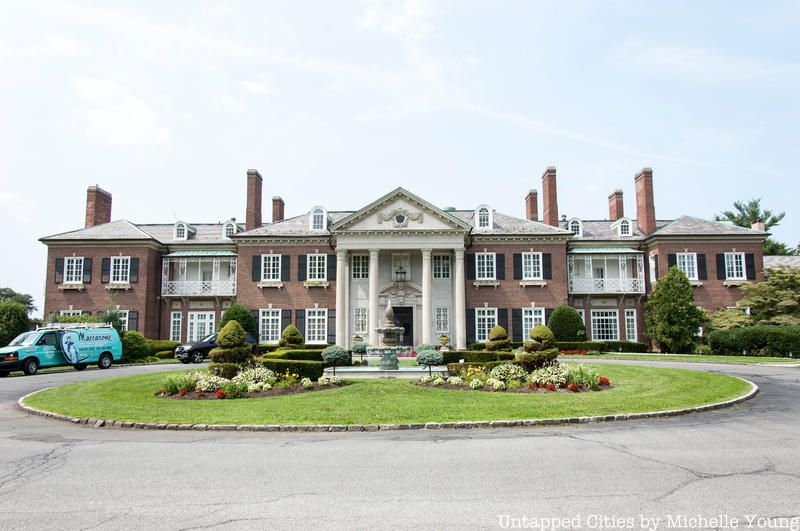
The brick Georgian Gold Coast Glen Cove Mansion — also known as The Manor — was the 1910, 55-acre estate of John Teele, an attorney and executive for the Standard Oil Company, and Ruth Pratt, the first Republican congresswoman from New York state. Designed by Charles Platt, it was designated one of the best twelve Country Houses in America. The surrounded area comprises many former prestigious Pratt family estates, such as Kllenworth, Poplar Hill, and The Braes & Welwyn–all built on a combined 1100 acres in Glen Cove, New York.
The estate was owned by the Pratt family until Ruth’s death in 1965. In 1967, the Glen Cove Mansion Hotel became one of the first conference center hotels in the United States. Today the opulent manor features 187 guest rooms, including four suites, private dining rooms, and outdoor reception areas with a vista of the mansion’s formal gardens. Glen Cove Mansion has also captured the attention of movie producers throughout the years and was chosen as the setting for movies such as North by Northwest and Sabrina.
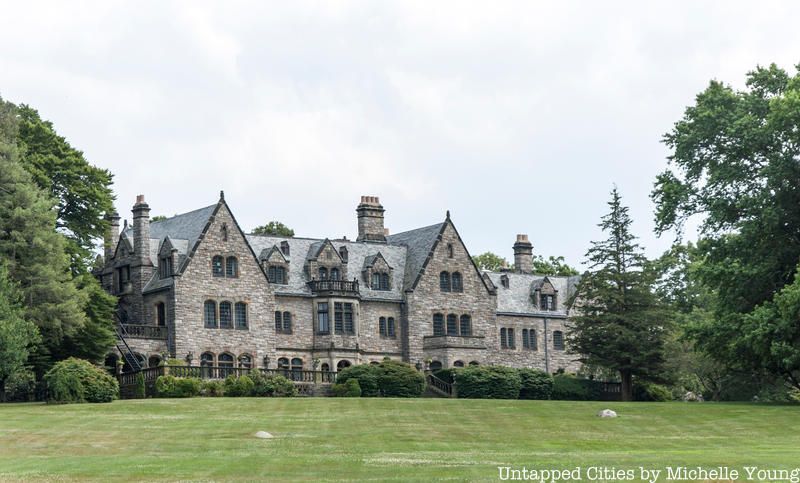
Mill Neck Manor sits amid an 86-acre scenic estate overlooking the Long Island Sound. The 34-room Tudor Revival-style mansion was used as a second summer residence by the cosmetic heiress Lillian Sefton Dodge and her husband Robert Leftwich Dodge, designed in 1923 and built at the cost of $2 million. The Manor, inspired by English Gothic country houses, is two-and-half stories high with a flat roof and a full basement. Mill Neck estate features numerous examples of fine craftsmanship, since Dodge, being an artist himself, employed the very best. The formal gardens were designed such that between the fountains and the temple, a sundial was formed which could be seen from the house. Also worthy of note, is that because of the acoustics of the temple domes of the garden–which was often used for courting–even soft conversations could be heard throughout the rest of the garden.
In 1949, the Gold Coast estate was purchased by Lutheran Friends of the Deaf for $216,000. The organization founded the Mill Neck Manor School for the Deaf there in 1951, which opened to 19 deaf boys and girls. However, the manor was vacated in 2001 when the organization moved to a new Deaf Education Center and has since then undergone renovations that have made it more suitable for hosting events. Today the manor hosts tours, and also serves as a venue for events and weddings. It has also been featured in television shows like
The Marvelous Mrs. Maiseland Gotham.
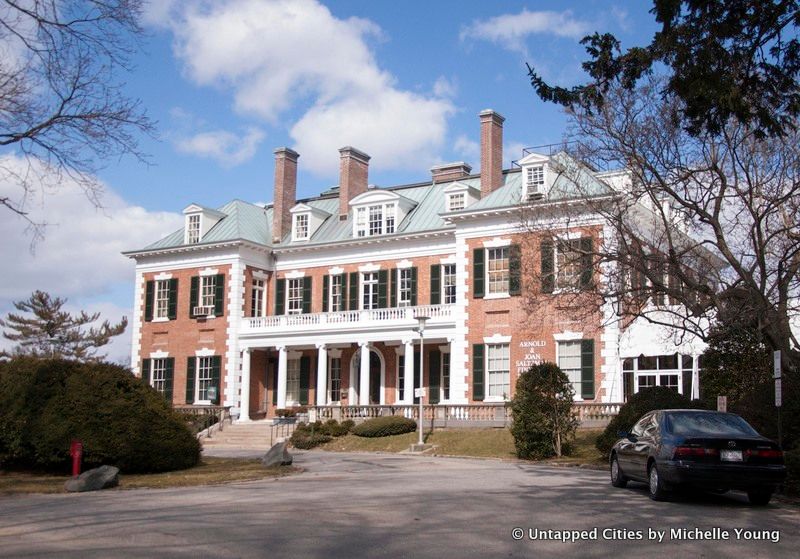
The Nassau County Museum of Art, one of the nation’s largest suburban art museums, is situated inside the former Gold Coast Childs Frick Estate. The land on which the museum grounds currently sits was previously a part of poet William Cullen Bryant’s retreat from his life in the city. In the 1890s the land — save seven acres — was sold by his family to former Congressman Lloyd Bryce. He constructed a Georgian Revival mansion, perched on the high ground of the estate and overlooking Hempstead Harbor. In 1919, the estate was bought by Henry Clay Frick, the co-founder of U.S Steel, as a wedding gift for his son, Childs. The architect Sir Charles Carrick Allorn was employed to redesign the facade and interior.
Childs Frick and his wife lived at Clayton until his death in 1965. Afterward, the county bought the estate four years later and converted it into the Nassau County Museum of Art. In addition to the various art exhibits, the museum also features a sculpture garden, an educational institution, and garden/walking trails.
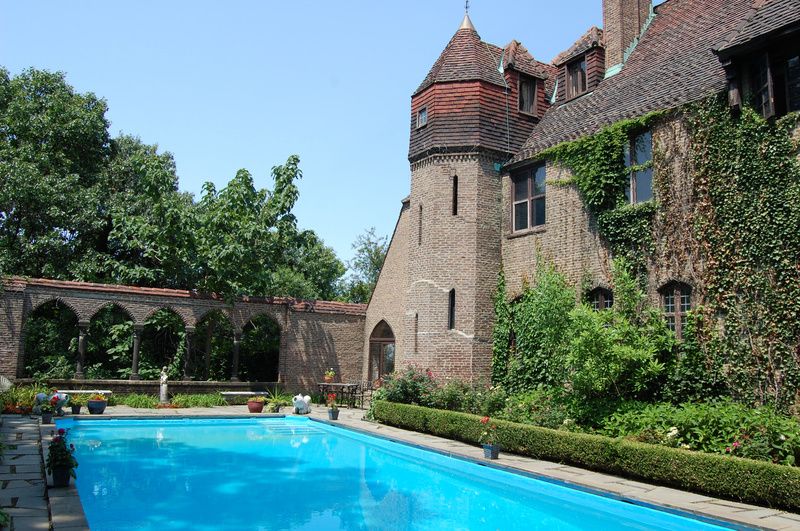
Falaise, the third mansion on the Guggenheim Estate, was built by Daniel Guggenheim’s son Harry on the 90 acres of the estate presented to him by his father upon his marriage. The waterfront, 13th-century Norman-style manor is one of the few intact historic houses on the North Shore of Long Island. The house contains many distinctive features such as an enclosed cobblestone courtyard, mortared brick walls, and a round tower. The interior evokes a medieval atmosphere–thick wood beams across the ceiling, door with archways, and fireplace carved stone mantels.
In addition to the style of architecture, Harry and his wife Caroline adorned the house with various pieces of art from the Renaissance and medieval periods, such as paintings, sculptures, and woodcarvings. Many of the pieces of this quintessential Golden Coast mansion are on display during the guided tours that run from late May to late November.
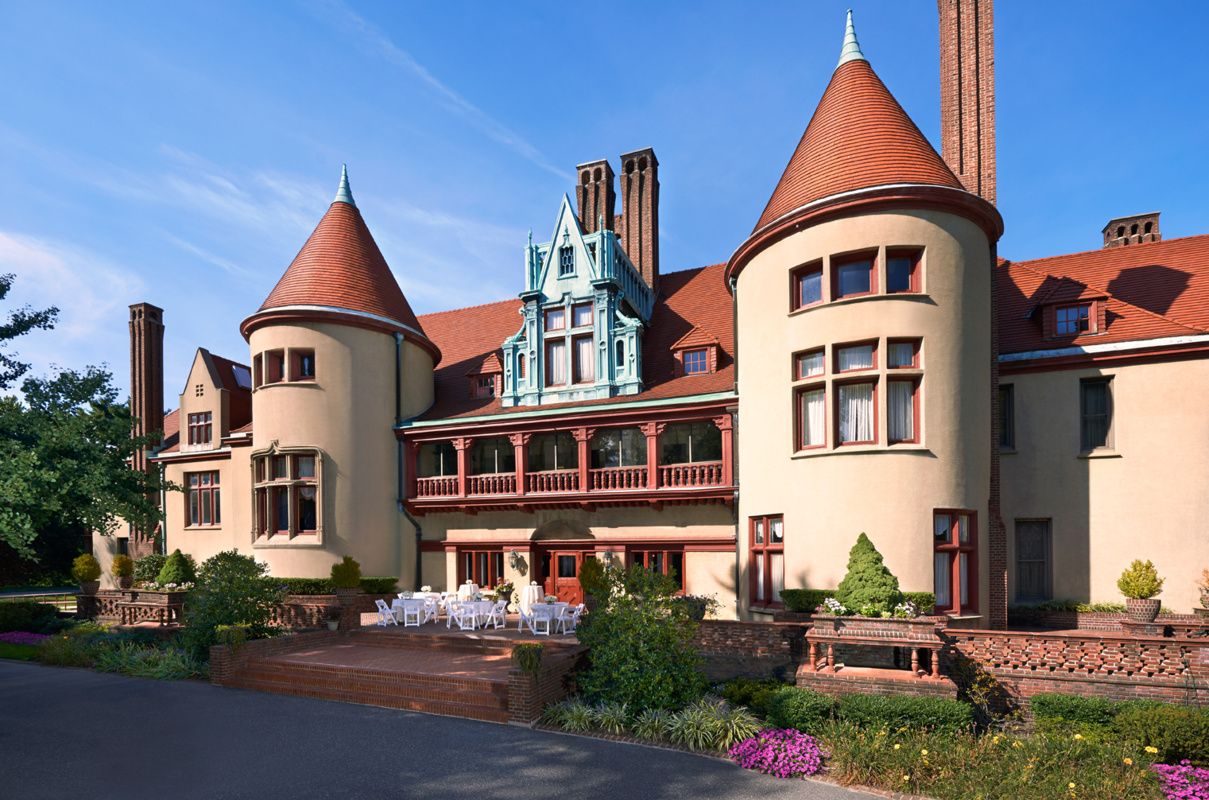
Modeled after a chateau in the south of France, Coindre Hall was the main house of a 135-acre estate owned by pharmaceutical mogul George McKesson Brown. Brown built the 30,000-square-foot mansion on the highest point of the verdant estate between 1906 and 1912. After Brown lost his estate in the stock market crash of 1929, the Brothers of the Sacred Heart bought the property and established a boarding school, which operated from 1939 to 1971 until it went bankrupt. After a lapse in usage, the school reopened in the mid-1980s for a short period as a private coeducational boarding school for students with learning disabilities.
Since 1973, Coindre Hall has been under the administration of the Suffolk County Department of Parks, Recreation and Conservation. While the gym still hosts soccer and basketball games, the mansion itself has been re-purposed to host weddings and other events.
Next, discover the Gilded Age Mansions of Fifth Avenue and 27 historic estates to visit in New York’s Hudson Valley.
Subscribe to our newsletter